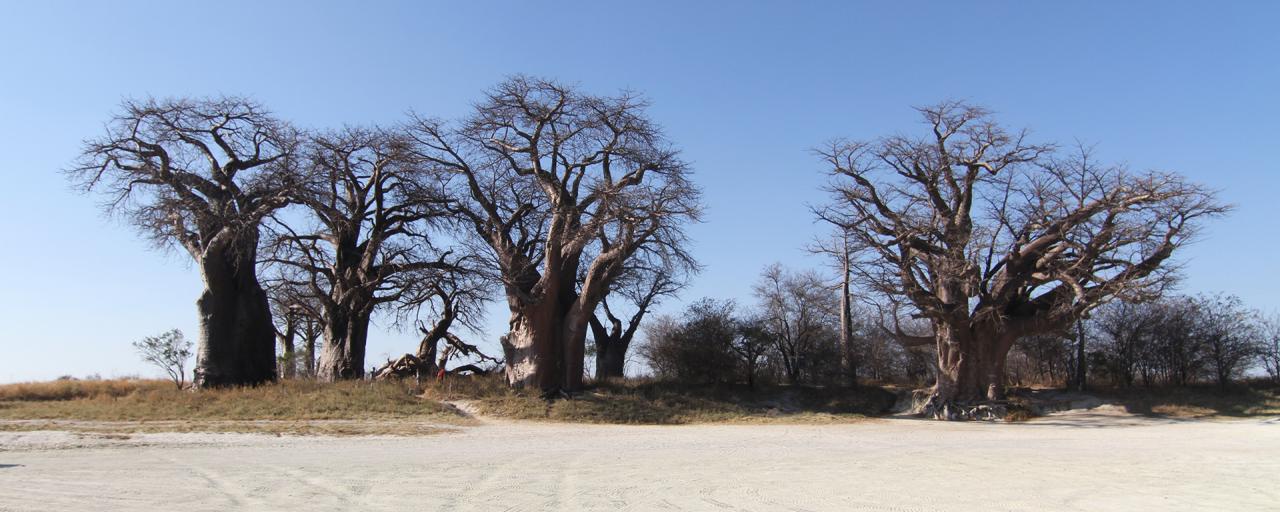Submitted by SafariADV on Thu, 2017-09-28
This morning we woke up at 6:00 am, out it is still dark, we dress and have breakfast on our coffee table, located next to the car and under a straw roof; we are at the Planet Baobab near Gweta and the camping here has many comforts.
The air, as always, is sparkling and drinking a nice hot coffee in our metal cups is just what it takes to get you starting the day well.
When we leave the sky begins to become clearer and when we get to the main road, the A3, to our right we see a spectacular sunrise with orange colors, only in Africa there are these spectacular colors, both at dawn and at sunset.
We turn to the left and see the sun rise in the rearview mirrors of our Toyota Hilux; thanks god they are huge!
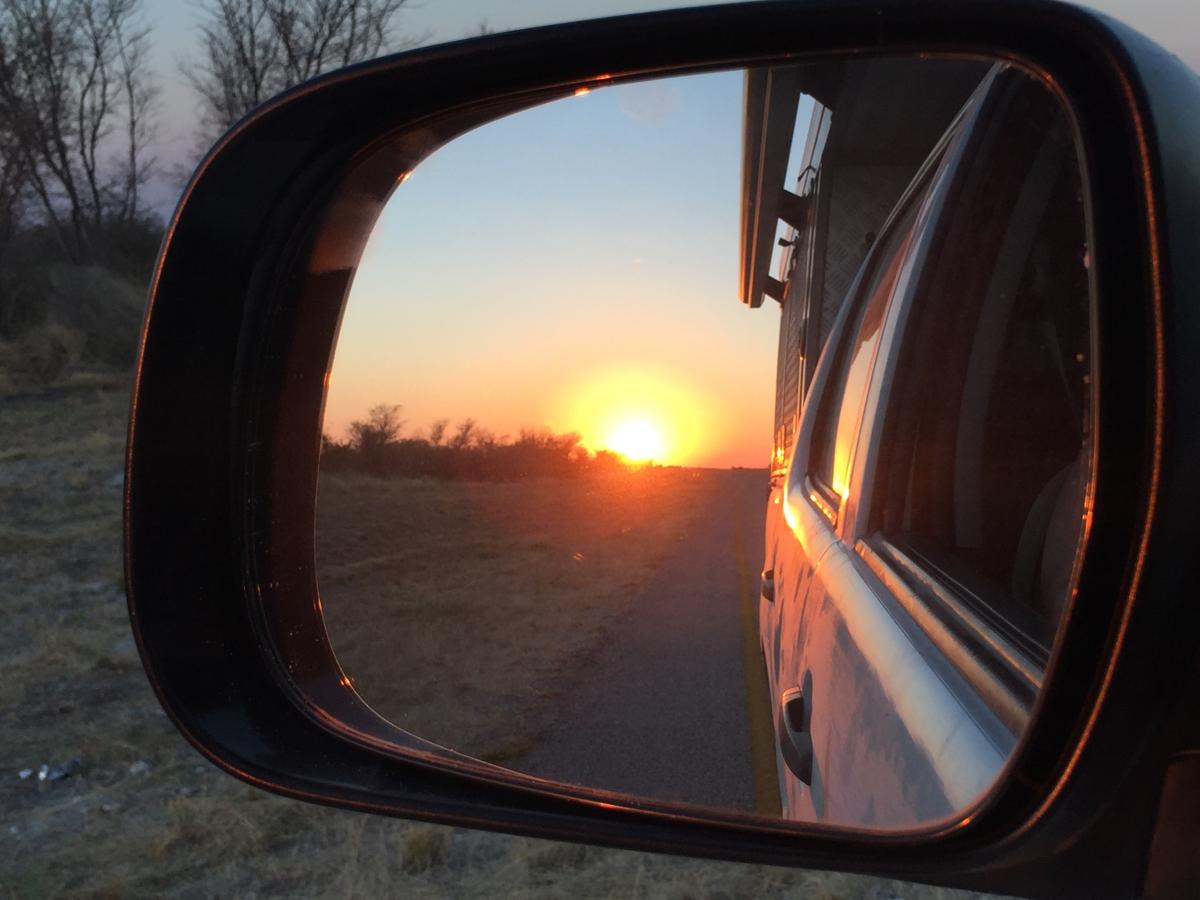
After 70 km of asphalted road, but full of holes, that we do slalom several times, we arrive at the gateway to the Nxai National Park (link Nxai NP + altri link da aggiungere), we turn right and get to the gate where there is no one.
We try to call saying "hello!" several times and finally a ranger comes up to us but tells us he has finished the receipts so he cannot charge us for the entrance and tells us "when you go to Maun go to the office and pay it there ".
He gives us some useful directions on the roads to go, but we have the map and Tracks4Africa, though it is always better to ask the ranger who, working and living in the park, is up to date on road conditions.
In fact he suggests that we should go the old road and not the new one, as this year, with the abundant rains that happened there, the new road is much more sandy than usual.
The old road is still somewhat sandy, so before we proceed we deflate the tires a bit, so we have more grip and we do not sand up.
The speed limit within the park is 40 km / h but it would be impossible to go faster for both the sandy bottom and because we look around to spot the animals.
After about 25 km we find the deviation for the Baobabs of Baines, but we will go there in the afternoon because the light is better, so we continue straight for another 25 km and arrive where are the buildings where the park ranger lives.
There is also a shop within a hut-shaped building, looking from outside it seems small, but inside it has all sorts of goods, such as personal hygiene products, drinks, spirits, and various foods, it is really well stocked; we buy something fresh to drink.
Immediately after we enter the Nxai Pan, here the soil is completely different, the sand has shed the place to a white and compact soil, white is due to the salt at the bottom of the pan.
We are in the dry season and there are not many animals, if you come to this park during the rainy season here you can see tens of thousands of zebras and wildebeests, as well as other antelopes and predators; while now most animals have migrated to the Okavango Delta, and only those species that are not dependent on water and are used to semi-arid or arid territories remain.
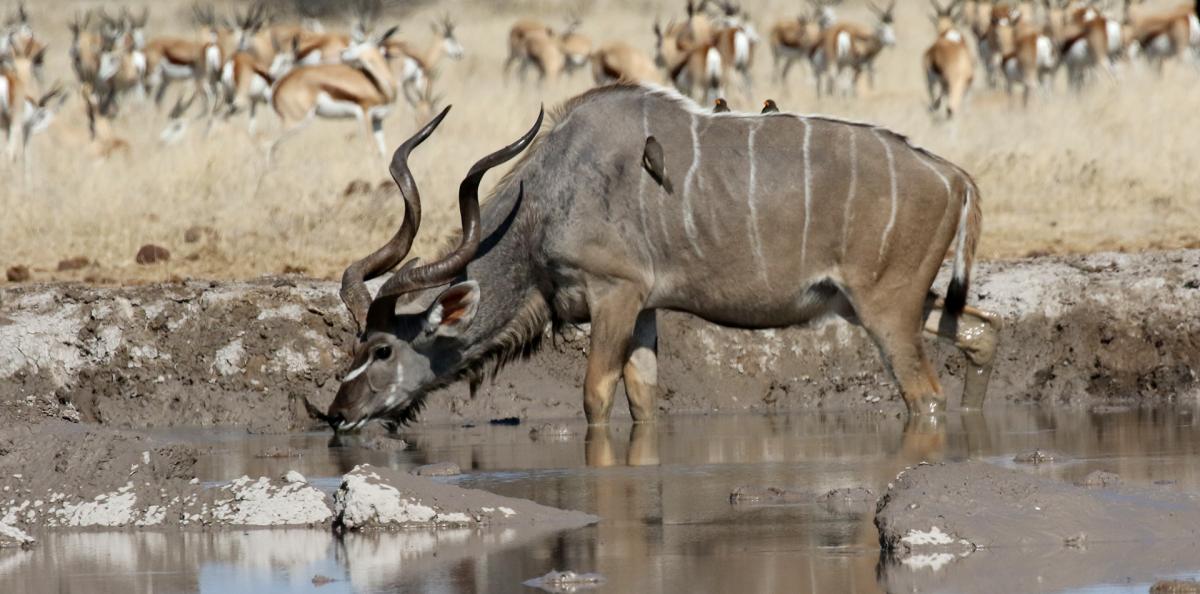
In the pan there are several puddles that are formed by the rainfall and then dry during the dry season, one of them is fed artificially to provide some water to the animals.
We head straight to this puddle and we see a bunch of hundreds of springboks, a little farther there is a small herd of wildebeests and on the side of the puddle to the left there are two black-backed jackals; in these cases, instead of going around the park in search for animals, it is better to stop at the pond and wait for the animals that sooner or later come to drink.
In fact, shortly thereafter, a flock of greater kudus comes, there is a proud male walking by a group of females; hesitant approaching the water to drink, at the same time the wildebeests approach and enter the water.
As we look at this scene, from afar, we see a wonderful male elephant coming up to the puddle and starting to spray the mud somewhere everywhere and then jumping into the water and with the paws moving the water to bathe, while the trunk sprinkles the water on the back.
What a spectacle to admire, we film it and photograph it; is a too beautiful scene.
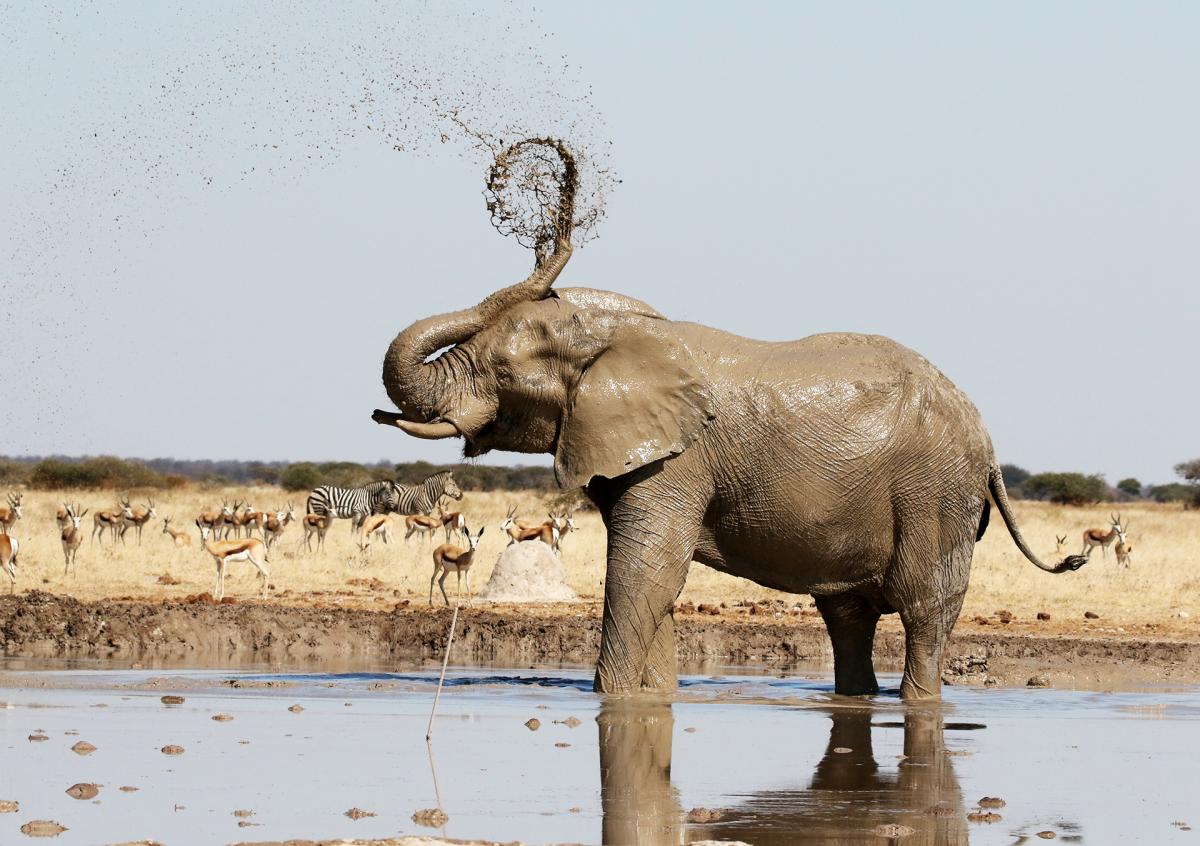
At some point it comes out of the puddle and we observe its movements, it is better to understand its direction in time and not to be on its way.
Soon after, five more elephants arrive and the scene is repeated; what wonderful animals!
We would like to stay all day looking at them, but it is time to go, the park closes at 6.30 pm and the road is long, it is very important to calculate the journey times and keep a lot of time for the unexpected.
We go South, pass by the ranger's buildings, and get into the sandy road that we came from; and here's the unexpected thing: an off-road in front of us is shelved and cannot get out, we and a South African who came in the opposite direction, went down to help them, when they leave, we continue on our way.
We take the deviation for the Baobabs of Baines, also this road is sandy, but as we approach the Kudiakam Pan, the soil becomes increasingly compact and white.
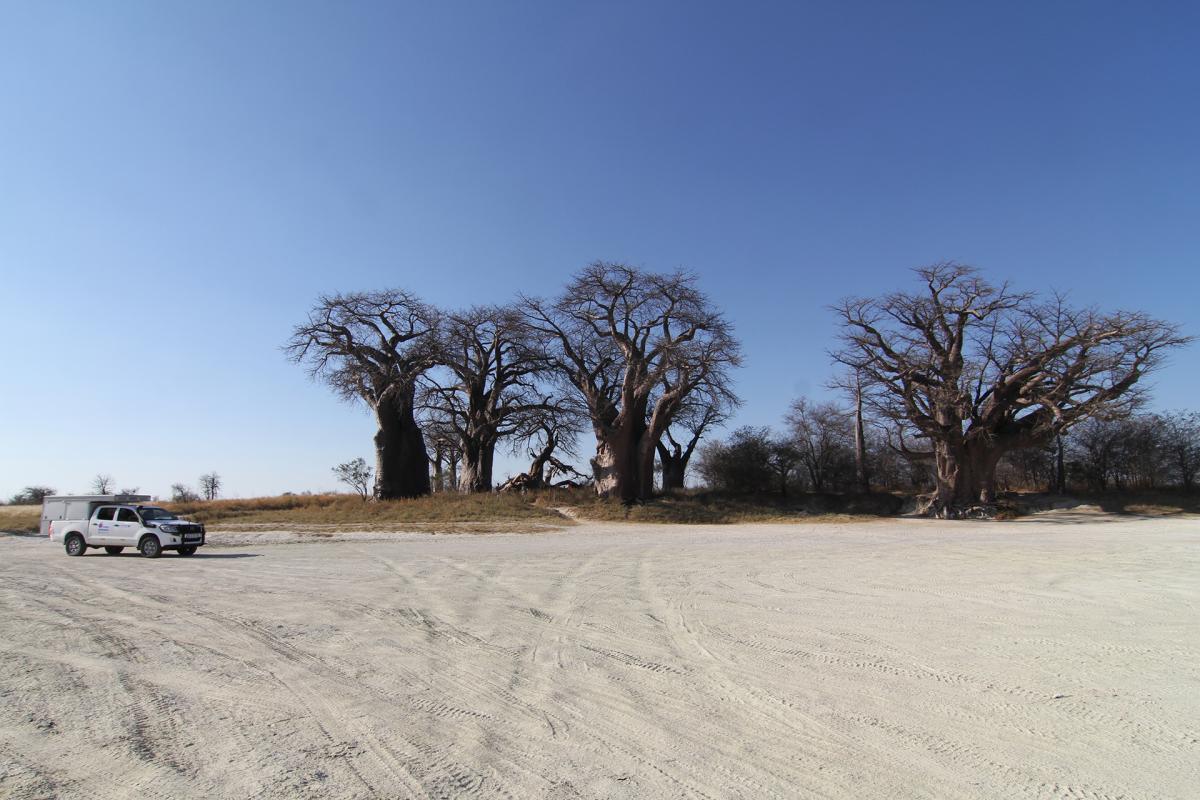
We pass a small portion of salty and drained pan; the sun-dried crust cracks under our wheels.
In the distance we observe the majestic baobabs, it is clear that they were a reference point for explorers such as Livingstone, Selous and Baines, who painted them in 1862 during his expedition in these lands.
It is estimated that they are 4,000 or 5,000 years old, they are gigantic and stand on an islet that looks directly onto the pan that has a crust of shiny white salt: what a spectacular place, stories and photographs cannot tell the beauty of this place.
From here we take the road we have come from and we reach the track by which we entered the park; at 6.00 pm we leave the gate, pump up the tires and leave again, while the sun is setting and blowing the sky with its marvelous colors.


